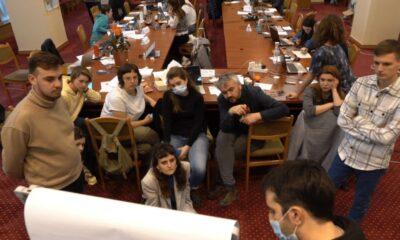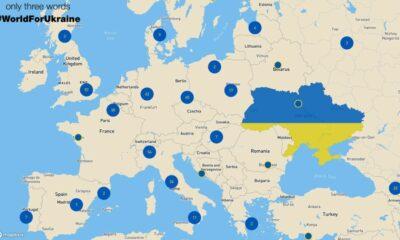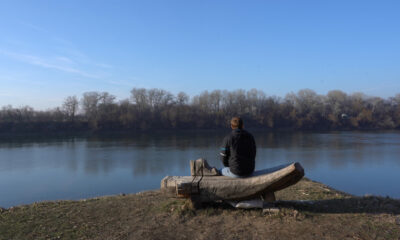Economy
Nuclear 'cheapest low-carbon option' for UK energy
Reading Time: 3 minutes Nuclear power will remain the cheapest way for the UK to grow its low-carbon energy supply for at least a decade, according to government advisers.
Nuclear power will remain the cheapest way for the UK to grow its low-carbon energy supply for at least a decade, according to government advisers.
But renewables should provide 30-45% of the nation’s energy by 2030, says the Committee on Climate Change (CCC).
Its new report suggests ministers may want to temper ambitions for offshore wind, which is still fairly expensive.
The coalition asked the CCC to advise on options for a low-carbon future shortly after taking office a year ago.
"People argue that offshore wind is very expensive – and it’s true, it is more expensive at the moment than some other technologies, so nuclear at the moment looks like the lowest cost low-carbon option," said CCC chief executive David Kennedy.
"But we can expect significant cost reductions over the next two decades across a range of technologies, whether wind, marine or solar, and that’s why these technologies are promising."
Wind could replace nuclear as the cheapest option within about 15-20 years, he indicated.
By 2030, the cost of using these low-carbon technologies rather than fossil fuels would put about £50 onto the average household’s energy bill.
However, bills could actually go down if plans to improve energy efficiency, such as boosting home insulation, come to fruition.
Hard target
The committee’s advice comes against a number of different targets and constraints.
First, there are European Union targets under which the UK has to achieve a 15% share of renewables by 2020, and a 34% cut in greenhouse gas emissions from 1990 levels.
It is already most of the way to the second of those targets, thanks mainly to the "dash for gas", measures to clean up methane emissions from landfill sites and the recession; but the renewables target is likely to prove tougher.
The government’s main strategy is to encourage the installation of offshore wind farms – committee calculations suggest that even if 10MW turbines come into the market, at least 3,600 would be needed.
Here, the committee has two concerns. Some of that electricity could be generated more cheaply through onshore wind or buying renewable electricity from overseas; and currently, financial incentives end in 2020.
"There isn’t anything in the way of government support after 2020 – it falls off a cliff – so we have to ask, ‘why would you expect anybody to build an offshore wind turbine factory in the UK?’" said Mr Kennedy.
"So we’re saying the government should commit to renewables support through the 2020s, and we’ve got offshore wind and marine technologies in mind here."
The committee is also looking at the government’s long-term target of a cut of at least 80% in greenhouse gas emissions by 2050, and asking what policies are needed in order to get on the right road.
They say that by 2030, it would mean generating virtually all electricity through low-carbon technologies – nuclear, renewables, and perhaps fossil-fuel stations that capture and store the carbon dioxide they produce.
Nuclear and renewables would each have about a 40% share, the report envisages.
This would require an additional two or three nuclear reactors on top of those developers are already planning to build.
The total amount of electricity generated would be about 20-25% larger than today, with the additional energy going to replace some of the heating currently done through burning gas and coal, and to power a burgeoning fleet of electric vehicles – 10 million by 2030.
"Smart batteries" in those vehicles would be among the resources used to store electricity at times of low demand and release it during peaks, helping to "smooth out" the supply across the day.
About 30-35% of the remaining heat requirement could be supplied through renewable technologies such as heat pumps and biogas, the committee says.
Only in transport would there be an enduring requirement for fossil fuels, with biofuels constrained by issues such as the increasing need for land to grow food crops.
Clean future?
Environmental groups have given the report a mixed reception.
"It’s great that the committee has recognised the huge role renewable energy could and should be playing in taking Britain towards a clean, prosperous future – and is right to call for a dramatic increase in investment to make this happen," said Craig Bennett, director of policy and campaigns with Friends of the Earth.
"But nuclear power can’t be part of the answer – our analysis shows it will divert vital money and effort away from developing renewable energy, and the jobs and industries it could bring to the UK.
"We’ve had 50 years of successive governments pandering to the nuclear lobby. If their promises of cheap, low-carbon energy were true, they would have been delivered by now."
EDF, one of Europe’s largest energy companies that is aiming to build new reactors in the UK, welcomed the nuclear emphasis.
"The CCC has said that safe nuclear power, the lowest cost, large scale, low-carbon electricity source, is a key element; we agree," it said in a statement.
"EDF Energy has already taken steps to respond to early lessons from Fukushima.
"The designs we propose for the future already build in the lessons from previous extreme events, inside and outside our industry [and] we will take account of new lessons from Japan."
Economy
Moldova will receive a disbursement of 36 million euros as part of the the Economic Recovery Plan
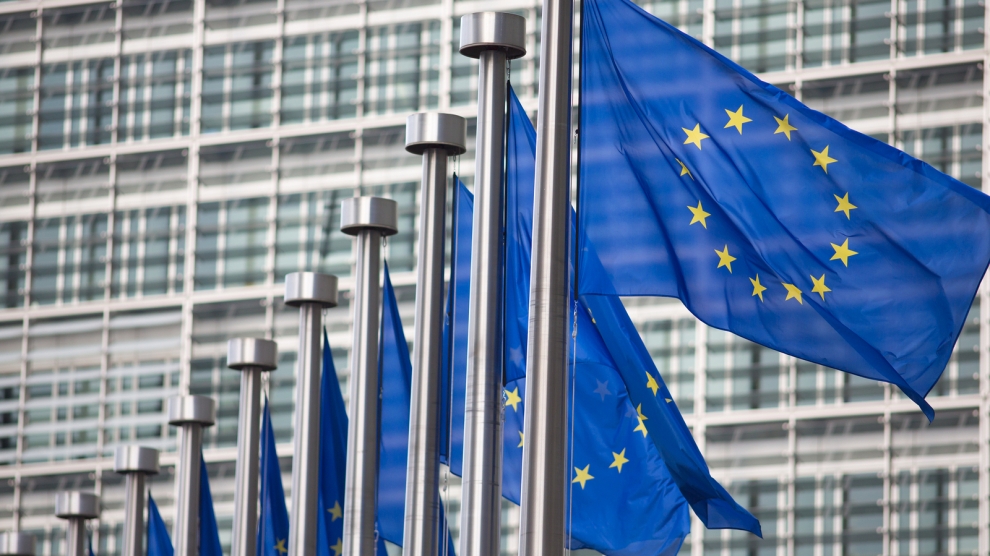
This week, the European Commission approved the disbursement of 36 million euros in grant money for the Republic of Moldova. The announcement was made by Deputy Director-General for Neighbourhood Policy and Enlargement Negotiations at the European Commission, Katarina Mathernova, who paid an official visit to the Republic of Moldova between September 13-15, together with Managing Director for Russia, Eastern Partnership, Central Asia, Regional cooperation and OSCE, at the European External Action Service, Michael Siebert.
The EU officials had meetings with President Maia Sandu, Minister of Foreign Affairs and European Integration, Nicu Popescu, Speaker of Parliament, Igor Grosu, Prime Minister of the country, Natalia Gavrilita, as well as key representatives of Government, international financial institutions and the civil society, according to a press release issued by the Delegation of the European Union to the Republic of Moldova.
Beside such topics as the EU-Moldova relations and prospects, the priorities of the reform agenda of the new Moldovan Government, preparations for the Eastern Partnership Summit at the end of the year and the Transnistrian conflict settlement, the officials also discussed the EU assistance in support of reforms and the Economic Recovery Plan for Moldova, which was announced in June with a total EU support of 600 million euros over the next 3 years.
“The first measures under the Economic Recovery Plan will shortly materialize, with the expected disbursement of 36 million euros in grant money under budget support programmes to support the authorities’ efforts to fight against the consequences of the pandemic. Moldova can count on EU’s assistance on its path to reforms and to recovery, bringing tangible results to citizens,” Katarina Mathernova stated.
The plan is based on assistance provided by the European Union through various bilateral and regional instruments, aiming to mobilize the funds in the form of grants, loans, guarantees and macro-financial assistance.
“The Economic Recovery Plan for the Republic of Moldova involves much more, not just this financial support provided immediately. It must help digital transformation, strengthen infrastructure, energy efficiency, education and support small and medium-sized enterprises,” the EU official also said.
As Prime Minister Natalia Gavrilita informed, “The Economic Recovery Plan and the 5 flagship initiatives for Moldova in the Eastern Partnership will directly contribute to the reform and consolidation of institutions, stimulate long-term socio-economic development, bring direct benefits to citizens, and unleash new economic opportunities through promoting the green agenda and digitization. Small and medium-sized enterprises (SMEs) have been hit hard by the crisis. Promoting and diversifying access to finance and reducing collateral requirements will be essential in supporting economic operators. We are grateful to the EU partners who will launch two programs to support 50 000 independent Moldovan SMEs to adapt to the new conditions.”
President of the Republic of Moldova, Maia Sandu, welcomed the decision of the European Union to disburse about 745 million lei in grant money, as the official page of the President’s Office announced. “EU support comes after a long period of freezing of European assistance, caused by former governments. We managed to relaunch the political dialogue with the European Union and resume financial assistance. The Republic of Moldova is gradually regaining the trust of its strategic partners. This European support is also a signal of encouragement for the new Government team in its commitment to clean up the institutions, fight corruption and launch development programs in the country,” said Maia Sandu.
Photo: unknown
Economy
Romania and Moldova signed a partnership memorandum pledging to cooperate in promoting their wines
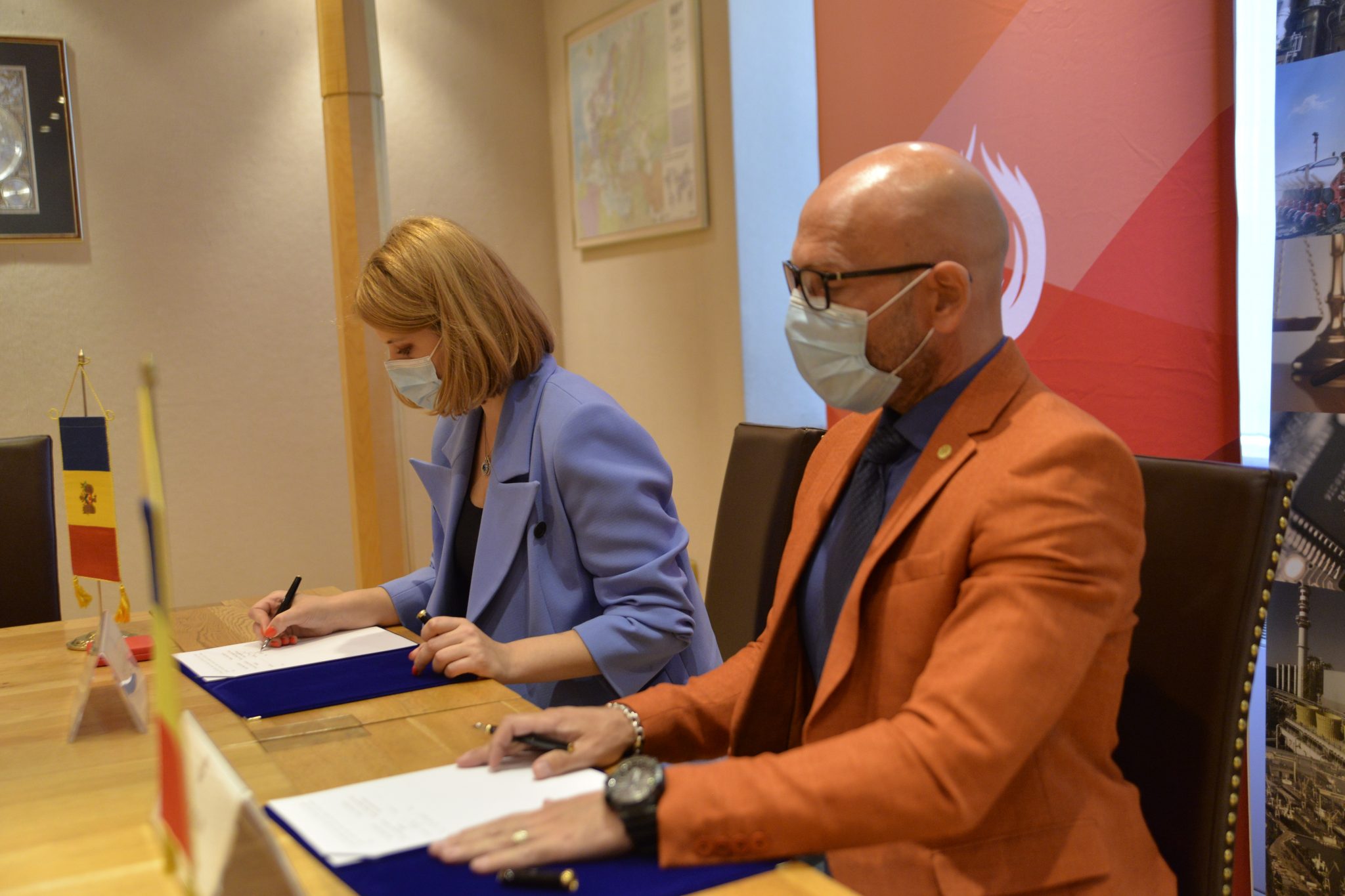
The Chamber of Commerce and Industry of Romania (CCIR) and the National Office for Vine and Wine (NOVW) of the Republic of Moldova signed, last week, a memorandum of cooperation on organizing joint promotional activities in the markets of common interest, as the CCIR announced.
China, Japan or the USA are just some of the markets targeted by the Romanian and Moldovan institutions. The memorandum also involves advertising activities for wines from common indigenous varieties, promoting the oeno-tourist region, developing a tourist route in the two states, exchange of experience, study visits, and mutual support in identifying new export opportunities. “We are very confident that this collaboration between our organizations will lead to sustainable economic growth and a higher degree of well-being among Moldovans and Romanians,” claimed Deputy Secretary-General of CCIR, Bogdan Visan.
On the other hand, Director of the NOVW, Cristina Frolov, declared that no open competition with Romania is aimed at the governmental level of the Republic of Moldova. “This request for collaboration is a consequence of the partnership principle. Romania imports 10-12% of the wine it consumes, and we want to take more from this import quota. Every year, the Romanian market grows by approximately 2.8%, as it happened in 2020, and we are interested in taking a maximum share of this percentage of imported wines without entering into direct competition with the Romanian producer,” the Moldovan official said. She also mentioned that Moldova aims at increasing the market share of wine production by at least 50% compared to 2020, and the number of producers present on the Romanian market – by at least 40%.
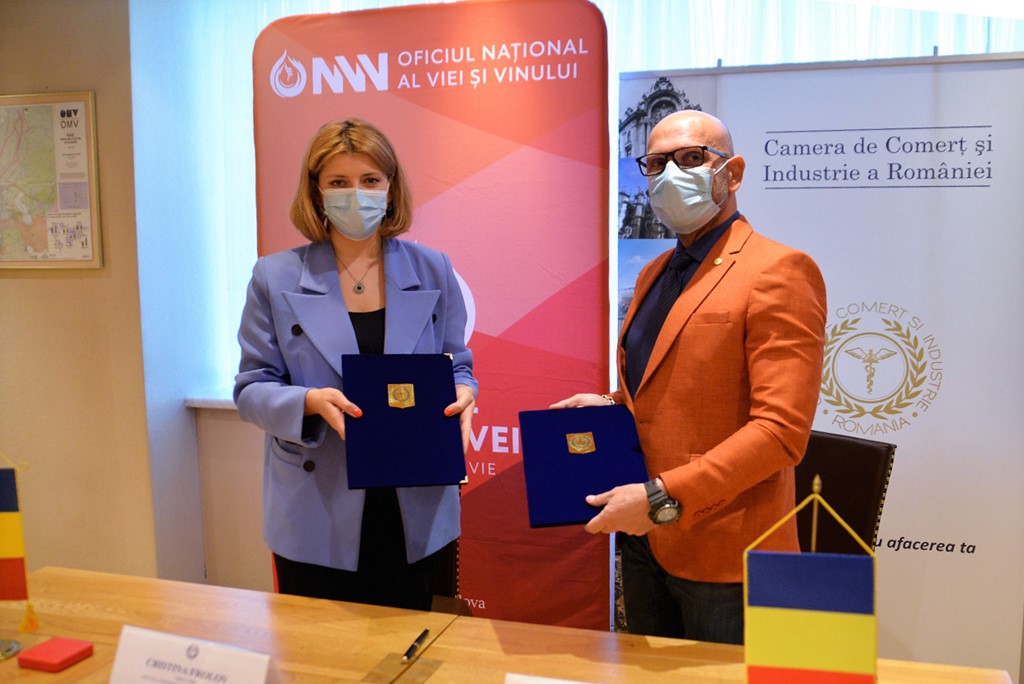
Source: ccir.ro
**
According to the data of the Romanian National Trade Register Office, the total value of Romania-Moldova trade was 1.7 billion euros at the end of last year and over 805 million euros at the end of May 2021. In July 2021, there were 6 522 companies from the Republic of Moldova in Romania, with a total capital value of 45.9 million euros.
The data of Moldova’s National Office of Vine and Wine showed that, in the first 7 months of 2021, the total quantity of bottled wine was about 27 million litres (registering an increase of 10% as compared to the same period last year), with a value of more than one billion lei, which is 32% more than the same period last year. Moldovan wines were awarded 956 medals at 32 international competitions in 2020.
Photo: ccir.ro
Economy
Moldova’s hope to be a top walnut exporter and its main difficulties

The Republic of Moldova has perfect weather conditions for growing walnut trees, that creating a great potential of walnut production and trade, especially on international markets, where the demand is way higher than the product’s supply. National and international experts believe that the country’s walnut production industry is on the verge of important transformations, which could lead to increased yields, quality and competitiveness worldwide.
According to authorities, Moldova exports 34-35 thousand tons of walnuts in shell, which is about 7% of the total export of fruit and 5% of the total export of horticultural products. The export value is assessed as being $120 million, that being 57-60% of the total fruit export value and about 50% of horticultural export value. Most of walnut crops are exported to the EU countries, such as France, Germany, the Netherlands, Romania and Austria. The country’s exports were among the world’s top 10 when it comes to the highest dollar value of the product during 2020.
Viorel Gherciu, Minister of Agriculture and Food Industry, pointed out that the production in the domestic walnut industry has increased by 55% in the last five years, which ranks Moldova among the main producers in the world.
“The biggest opportunity for this industry is that we are in the geographical proximity of the largest walnut import area in the world, which is the European Union, with almost 40% of total imports in the world. We are on the EU border, with privileged relations, with an Association Agreement. We already enjoy a good relationship in working with European importers, they trust our processors. A very close collaboration has been created and this is, in fact, the guarantee for those who invest in the area,” claimed the president of the Walnut Producers Association, Oleg Tirsina.
The data provided by the National Bureau of Statistics show that there are 34.7 thousand hectares of walnut plantations in the country. 20.90 hectares are represented by orchards. 75% of planted orchards are formed of old varieties trees. 30-35% of the exported production comes from orchards, the rest comes from individual farmers and plantations along the roads. This means that the quality of walnut production is not at its maximum potential. Developing commercial plantations through orchards modernization and extension of walnut varieties would provide double yield and better quality, experts say.
Governmental support in the form of subsidizing solutions, foreign investments and credit options are indispensable for the industry development. One of the financing options is the credit line of the European Investment Bank Project. Since 2016, 15 producers and processors of nuts, almonds and hazelnuts have benefited from these loans with the total amount of investments worth 8.7 million euros. A further extension of the project would provide another 60 million euros for the modernization of the horticultural sector in general and for harvesting organic walnuts in particular.
Photo: heymoldova.com


